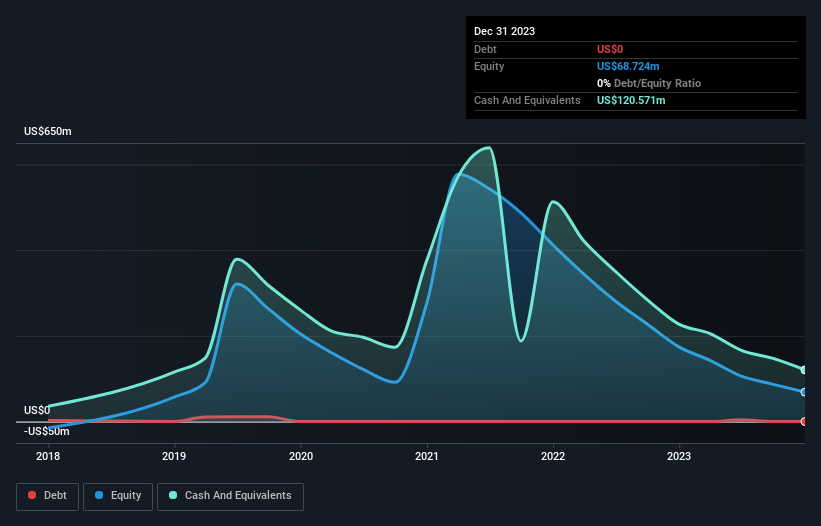We're Hopeful That Jumia Technologies (NYSE:JMIA) Will Use Its Cash Wisely
We can readily understand why investors are attracted to unprofitable companies. Indeed, Jumia Technologies (NYSE:JMIA) stock is up 125% in the last year, providing strong gains for shareholders. But while history lauds those rare successes, those that fail are often forgotten; who remembers Pets.com?
In light of its strong share price run, we think now is a good time to investigate how risky Jumia Technologies' cash burn is. For the purposes of this article, cash burn is the annual rate at which an unprofitable company spends cash to fund its growth; its negative free cash flow. First, we'll determine its cash runway by comparing its cash burn with its cash reserves.
See our latest analysis for Jumia Technologies
How Long Is Jumia Technologies' Cash Runway?
A cash runway is defined as the length of time it would take a company to run out of money if it kept spending at its current rate of cash burn. As at December 2023, Jumia Technologies had cash of US$121m and no debt. Looking at the last year, the company burnt through US$76m. That means it had a cash runway of around 19 months as of December 2023. That's not too bad, but it's fair to say the end of the cash runway is in sight, unless cash burn reduces drastically. Depicted below, you can see how its cash holdings have changed over time.
How Well Is Jumia Technologies Growing?
Jumia Technologies managed to reduce its cash burn by 70% over the last twelve months, which suggests it's on the right flight path. Unfortunately, however, operating revenue dropped 16% during the same time frame. Considering the factors above, the company doesn’t fare badly when it comes to assessing how it is changing over time. While the past is always worth studying, it is the future that matters most of all. For that reason, it makes a lot of sense to take a look at our analyst forecasts for the company.
How Hard Would It Be For Jumia Technologies To Raise More Cash For Growth?
Jumia Technologies seems to be in a fairly good position, in terms of cash burn, but we still think it's worthwhile considering how easily it could raise more money if it wanted to. Companies can raise capital through either debt or equity. Commonly, a business will sell new shares in itself to raise cash and drive growth. We can compare a company's cash burn to its market capitalisation to get a sense for how many new shares a company would have to issue to fund one year's operations.
Jumia Technologies' cash burn of US$76m is about 11% of its US$709m market capitalisation. As a result, we'd venture that the company could raise more cash for growth without much trouble, albeit at the cost of some dilution.
How Risky Is Jumia Technologies' Cash Burn Situation?
On this analysis of Jumia Technologies' cash burn, we think its cash burn reduction was reassuring, while its falling revenue has us a bit worried. While we're the kind of investors who are always a bit concerned about the risks involved with cash burning companies, the metrics we have discussed in this article leave us relatively comfortable about Jumia Technologies' situation. Separately, we looked at different risks affecting the company and spotted 2 warning signs for Jumia Technologies (of which 1 can't be ignored!) you should know about.
Of course Jumia Technologies may not be the best stock to buy. So you may wish to see this free collection of companies boasting high return on equity, or this list of stocks that insiders are buying.
Have feedback on this article? Concerned about the content? Get in touch with us directly. Alternatively, email editorial-team (at) simplywallst.com.
This article by Simply Wall St is general in nature. We provide commentary based on historical data and analyst forecasts only using an unbiased methodology and our articles are not intended to be financial advice. It does not constitute a recommendation to buy or sell any stock, and does not take account of your objectives, or your financial situation. We aim to bring you long-term focused analysis driven by fundamental data. Note that our analysis may not factor in the latest price-sensitive company announcements or qualitative material. Simply Wall St has no position in any stocks mentioned.

 Yahoo Finance
Yahoo Finance 
